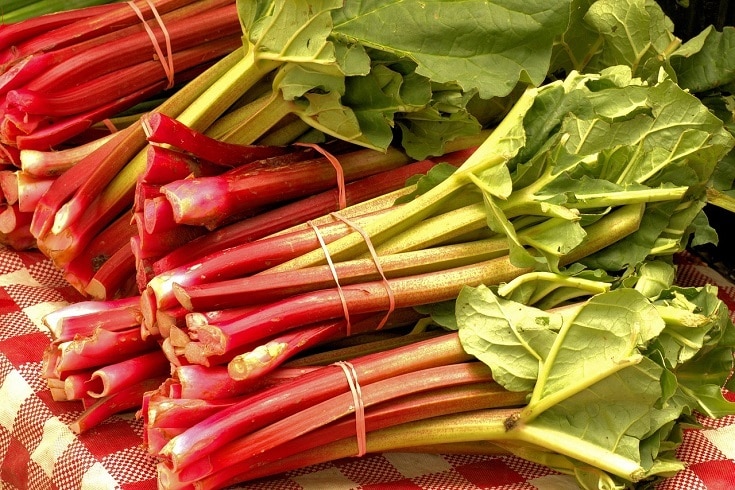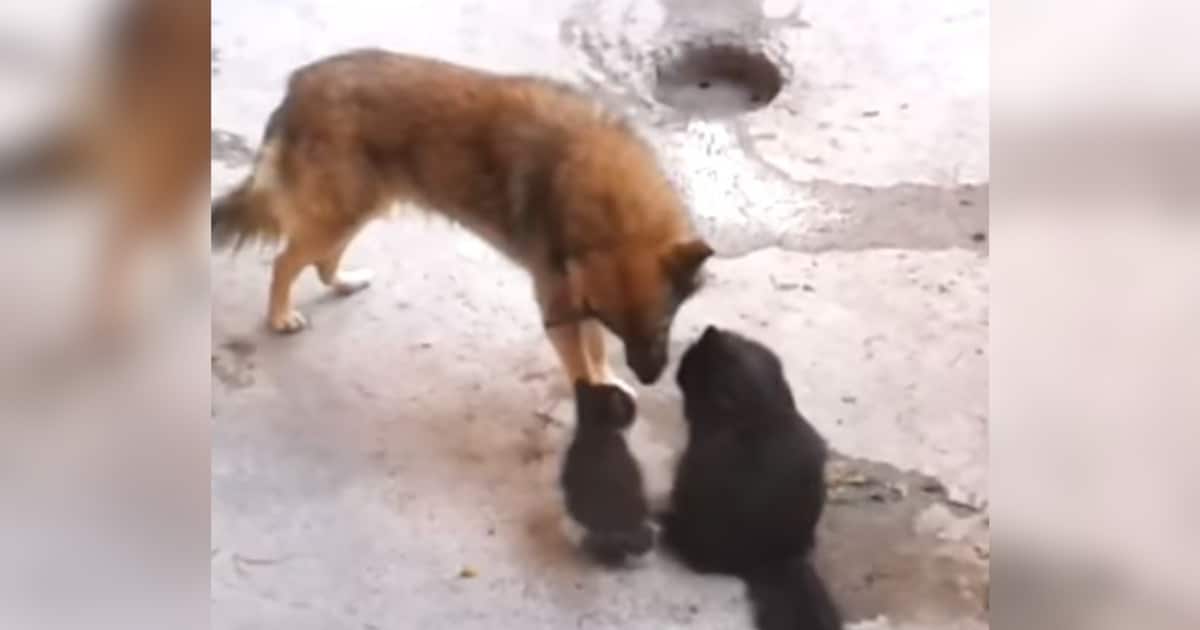
The information is current and up-to-date in accordance with the latest veterinarian research.
Learn more »
Since it’s full of vitamins, minerals, and antioxidants, rhubarb is one popular pie ingredient we don’t have to feel guilty about eating. But as much as we enjoy rhubarb, is this tart and tasty garden delight a sensible food for our dogs? While rhubarb stalks are unlikely to cause health issues when eaten in moderation, the leaves can have severe toxic effects requiring immediate veterinary care.
If you suspect your dog ate a rhubarb plant by accident, whether the leaf or the stalk, contacting your vet straight away for advice and monitoring for signs of toxicity can be crucial in preventing lasting internal damage. Follow along as we discuss whether dogs can eat rhubarb, the dangers involved, and how to keep your pet safe around this colorful culinary addition.
Why Can’t Dogs Eat Rhubarb?
Dogs should not eat rhubarb because it contains soluble oxalates throughout the plant. The leaves contain the most oxalic acid, making them toxic to humans and pets. Oxalates are also present but much less abundant in the edible stalk, so it is unlikely to cause issues for a dog unless they ingest an extreme amount.
Rhubarb poisoning is rare in small animals. Healthy dogs must eat a lot of the stalk to show signs of toxicity, and for most, rhubarb is too tart to make them consume large quantities. If they eat a more palatable version, such as in a pie, the sugar is likely to be more problematic than the rhubarb, and you’ll likely see GI issues like diarrhea or vomiting before signs of oxalate damage.
Image Credit: KarepaStock, Shutterstock
Soluble Oxalates
Rhubarb leaves and, to a lesser extent, stalks contain soluble forms of oxalic acid, an antinutrient in various vegetables, fruits, and nuts. Other plants containing soluble oxalates include:
Shamrock
Star fruit
Spinach
Beetroot
Green beans
Virginia creeper
Prickly pear
Lambsquarters
The soluble oxalate in rhubarb differs from the insoluble calcium oxalate, which makes Arums and other ornamental plants dangerous. When animals bite into them, insoluble calcium oxalate-containing plants release sharp oxalate crystals. The crystals dig into mucous membranes in the mouth and digestive tract, causing pain, swelling, and GI issues.
By contrast, soluble oxalates don’t cause immediate mechanical damage. Instead, the oxalates in rhubarb can be absorbed into the body, leading to various physical signs and kidney problems in severe cases.
Hypocalcemia and Kidney Injury
The oxalic acid and oxalate salts in rhubarb are absorbed through the gut and into the bloodstream. Once there, they bind with calcium in the serum, forming calcium oxalate. A drop in blood calcium (hypocalcemia) results, which can cause several signs, including:
Panting and restlessness
Muscle twitches, spasms, and convulsions
Excessive salivation
Loss of appetite
Vomiting or diarrhea
Lethargy
Nervousness
Weakness
Poor coordination
Irregular or weak heartbeat
As calcium oxalate crystals form, they can cause obstructions in the urinary tract and damage to kidney tubules. Anorexia, abdominal pain, vomiting, and lethargy may occur, as will signs of kidney malfunction, including excessive drinking and urination, low or no urination, or blood in the urine, usually occurring 24–36 hours after eating the toxic plant. In extreme cases, kidney failure can be fatal.
Image Credit: Przemek Iciak, Shutterstock
Factors Affecting Rhubarb’s Toxicity to Dogs
Rhubarb’s toxic effects can vary between different dogs. For example, dogs suffering from dehydration or pre-existing kidney problems will be at a higher risk of kidney injury from eating too many high-oxalate foods, such as rhubarb. In addition, toy and small breed dogs are already at increased risk of forming calcium oxalate stones, so increased dietary intake of oxalate can increase this risk even further.
Your dog’s diet may also affect rhubarb’s toxicity, as certain high-mineral foods may keep oxalates from absorbing into the body. For instance, if your dog ate something with high amounts of calcium, the calcium can bind the oxalates in their gut and cause them to pass the calcium oxalate in their waste, limiting the oxalates entering their system and reducing the likelihood of hypocalcemia and kidney injury.
What to Do If Your Dog Ate Rhubarb
Contact your vet for advice if your dog has eaten rhubarb, especially if they show any signs of toxicosis or you aren’t sure how much they’ve eaten. It’s important to act quickly to make sure your dog receives the necessary treatment.
Follow your vet’s advice on how to proceed, your dog may need an evaluation and treatment at the veterinary clinic. If necessary, your vet can provide poison control measures (e.g., inducing vomiting, administering activated charcoal) and supportive therapy, including IV treatment and medications.
Conclusion
Rhubarb poisoning is more of a concern for grazing animals that might commonly eat the vegetable in their diet than for the average house pet. Dogs typically don’t care for the tart stalks, leaving little chance of eating the exorbitant amounts needed to cause problems. Still, the risk exists, and understanding whether dogs can eat human foods like rhubarb is a vital aspect of pet ownership that can have an enormous and lasting impact on your pet’s health.
Featured Image Credit: MikeGoad, Shutterstock






